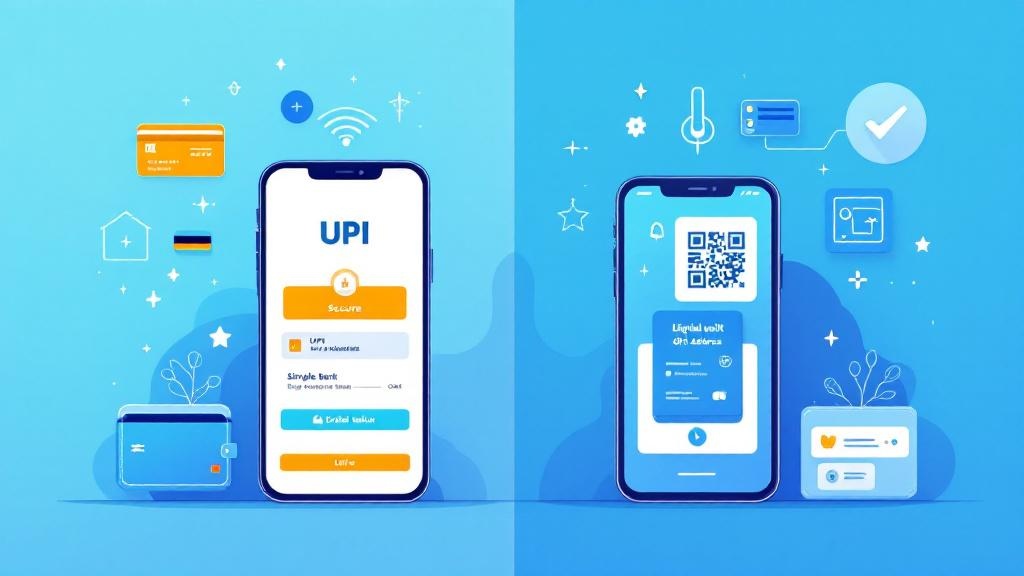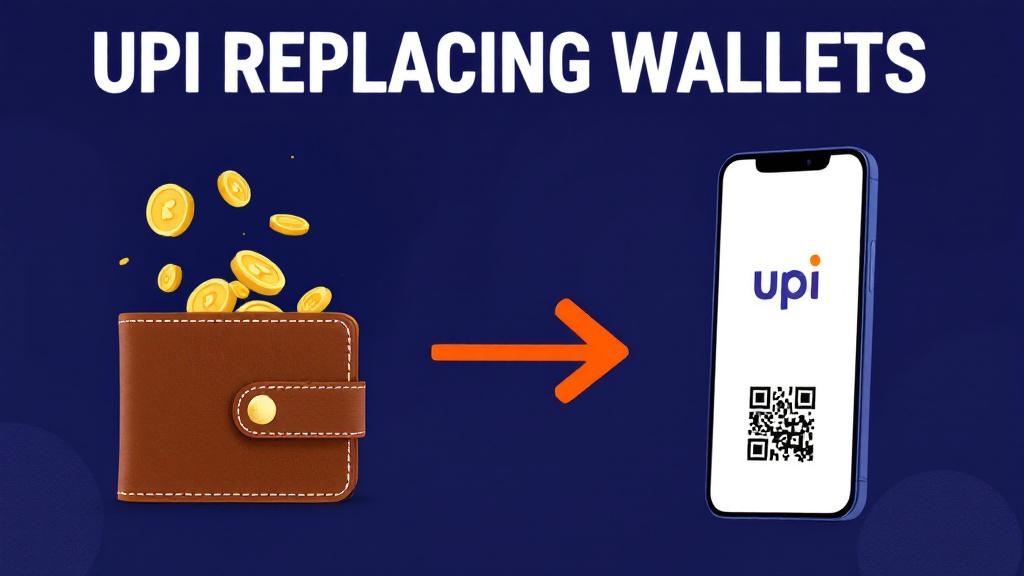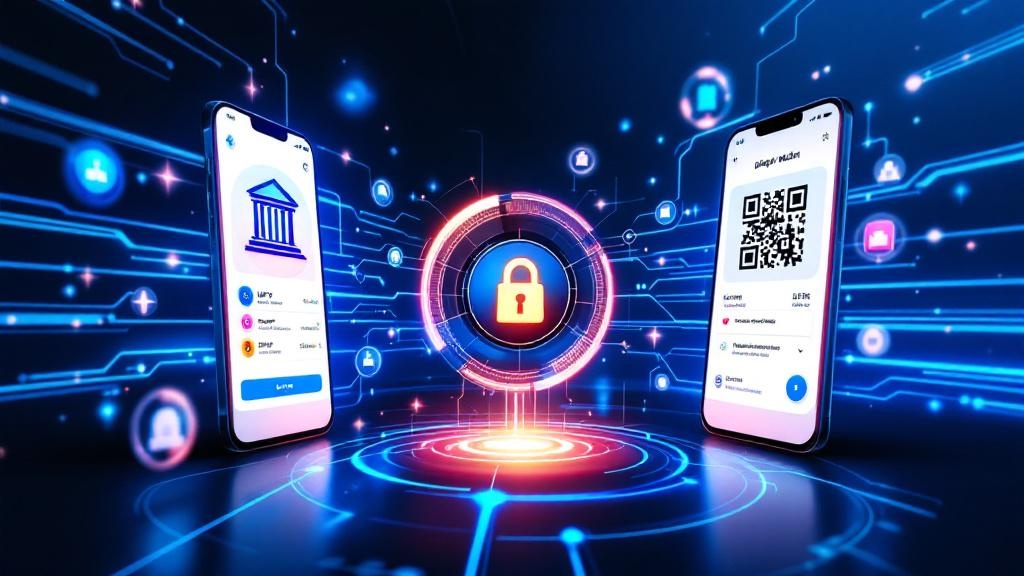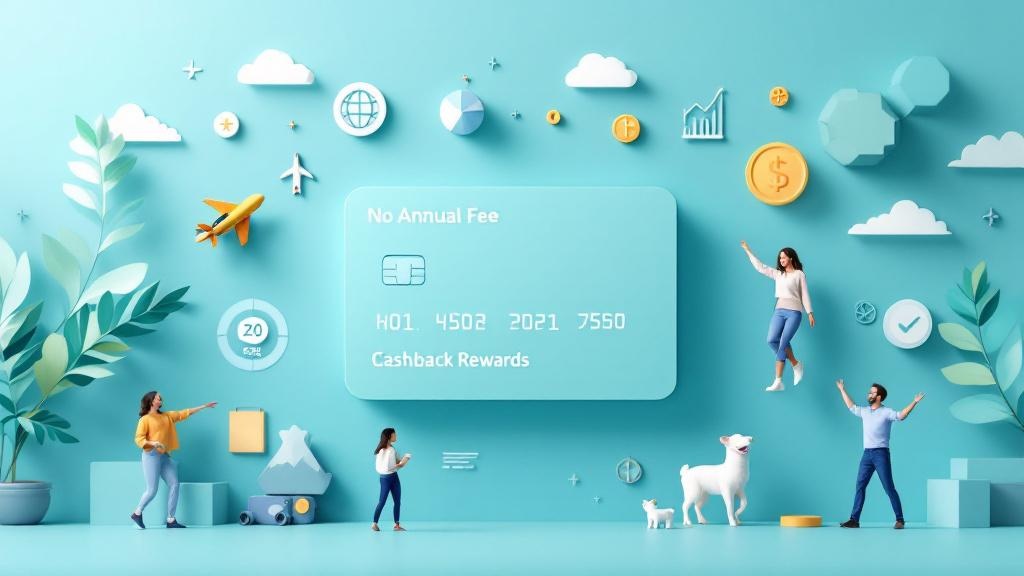In recent years, digital payments have revolutionized the way we conduct financial transactions in India. Two major players in this ecosystem are UPI (Unified Payments Interface) and mobile wallets (e-wallets). Both have their own unique features and benefits, but understanding the key differences can help you decide which payment method suits your needs best.
In this article, we’ll dive deep into the digital wallet vs UPI debate, highlighting their advantages, drawbacks, and real-world examples to give you a clearer picture.
Table of Contents
ToggleWhat is UPI?
UPI is a real-time payment system developed by the National Payments Corporation of India (NPCI). Launched in 2016, it allows users to send and receive money instantly through their smartphones. UPI links multiple bank accounts to a single platform, making payments seamless, fast, and hassle-free.
With UPI, users can transfer funds directly between bank accounts, making it different from traditional methods like NEFT or IMPS. A key feature of UPI is the use of a Virtual Payment Address (VPA), such as yourname@upi, which eliminates the need for entering long bank account details.
What is a Mobile Wallet?
A mobile wallet, also known as an e-wallet, is a digital wallet that stores payment information securely on a smartphone. E-wallets allow users to store their credit/debit card details, digital money, or even cryptocurrencies for quick payments. Popular mobile wallets in India include Paytm, Google Pay, PhonePe, and Amazon Pay.
Mobile wallets enable users to make QR code payments, transfer money to other users, pay bills, and even buy goods and services without needing physical cash or a card.
Key Differences Between UPI and Digital Wallets
1. Transaction Process: UPI vs Digital Wallet
UPI operates on a direct bank-to-bank transaction method. You simply link your bank account to a UPI app, and with a Virtual Payment Address (VPA) or QR code, you can send or receive funds in real-time. UPI transactions are free of charge, and since they are linked to your bank, the payments are automatically deducted or credited to your account without the need for an intermediary.
In contrast, mobile wallets work as intermediaries. To use a wallet, you first need to load it with funds from your bank account, credit/debit card, or another wallet. Once loaded, you can use the wallet to make payments, transfer money, and complete purchases. Some digital wallets also allow linking multiple bank accounts, but they still act as a third-party service.
2. Security: UPI vs Mobile Wallet
Both UPI and mobile wallets offer robust security features, but the way they handle security varies.
-
UPI Payment System uses two-factor authentication (2FA): When you initiate a transaction, you need to enter your PIN, which adds an extra layer of security. UPI also supports end-to-end encryption for secure payments and follows the RBI guidelines for digital payments.
-
Mobile wallets typically require a PIN or biometric authentication (fingerprint or face recognition) to access the wallet. Additionally, wallets like Paytm and Google Pay offer 2FA for transactions. The major security risk with mobile wallets is the centralized storage of data, making it a potential target for hackers if the app or account is compromised.
3. User Experience and Convenience
When it comes to convenience, UPI is a game-changer. It’s incredibly easy to use and doesn’t require loading funds into an account. All you need is your VPA or QR code to make payments. UPI also allows for peer-to-peer payments and bill payments in just a few clicks.
On the other hand, mobile wallets require users to add funds to the wallet, which may seem like an extra step for someone who just wants to send or receive money quickly. However, wallets provide added features like rewards programs, cashbacks, and integrations with e-commerce platforms, which makes them a preferred choice for online shopping and digital services.
4. Benefits and Features of Digital Wallets
Mobile wallets have evolved beyond basic payment options, offering a variety of features that go beyond UPI:
-
Loyalty Programs: Many wallets have cashback offers, discounts, and rewards for transactions.
-
Bill Payments: Mobile wallets allow users to pay utility bills, mobile recharges, and more.
-
Integration with E-Commerce: Wallets like Amazon Pay and Google Pay integrate seamlessly with e-commerce platforms for quick shopping.
-
KYC (Know Your Customer): Mobile wallets require users to complete a KYC process to ensure secure transactions.
5. Best Digital Wallets in India
Some of the most popular and trusted mobile wallets in India include:
-
Paytm: Offers a comprehensive suite of services, including bill payments, ticket bookings, and money transfers.
-
PhonePe: Known for its simplicity and cashback offers, PhonePe supports UPI and QR code payments.
-
Google Pay: Allows users to link bank accounts and make UPI-based payments along with wallet services.
UPI vs E-Wallet Comparison: The Verdict
-
UPI is ideal for bank-to-bank transfers, quick payments, and users who prefer direct transactions without intermediaries.
-
Mobile wallets are perfect for those who want to keep their funds stored for quick access, earn rewards, and make payments at various stores, both online and offline.
FAQs on UPI vs Digital Wallets
1. What is the difference between UPI and digital wallet?
UPI is a real-time, bank-to-bank payment system, while a digital wallet stores payment information, allowing for quicker purchases and transactions without using your bank account directly.
2. Which is safer: UPI or digital wallet?
Both are safe, but UPI transactions are typically more secure due to direct bank involvement and built-in 2FA. Digital wallets, while secure, store data on a third-party server, which may present a slight security risk.
3. Can UPI be used for e-commerce payments?
Yes, UPI is widely accepted by e-commerce platforms in India, and many wallets also allow UPI-based payments.
4. How does UPI work?
UPI works by linking multiple bank accounts to a single mobile app. You can send or receive money using a VPA (Virtual Payment Address), which is linked to your bank.
5. What are the benefits of digital wallets?
Digital wallets offer features like cashbacks, rewards, and seamless integration with e-commerce platforms, making them a convenient choice for online shoppers.
6. Do digital wallets charge fees for transactions?
Many digital wallets charge transaction fees for certain types of transfers or services, unlike UPI, which is generally free of charge for users.
7. Can I use UPI for peer-to-peer payments?
Yes, UPI supports peer-to-peer payments, allowing you to send money to anyone using their VPA or bank account number.
Conclusion
In the battle of digital wallet vs UPI, there’s no one-size-fits-all solution. Both have their unique advantages depending on the use case. If you want direct bank transfers and zero fees, UPI is your best bet. However, if you’re looking for a convenient wallet to store money, earn rewards, and make purchases both online and offline, a digital wallet might be more up your alley.
As digital payments continue to evolve, understanding these differences will help you make informed choices on how to manage your finances securely and efficiently.








Comments (0)